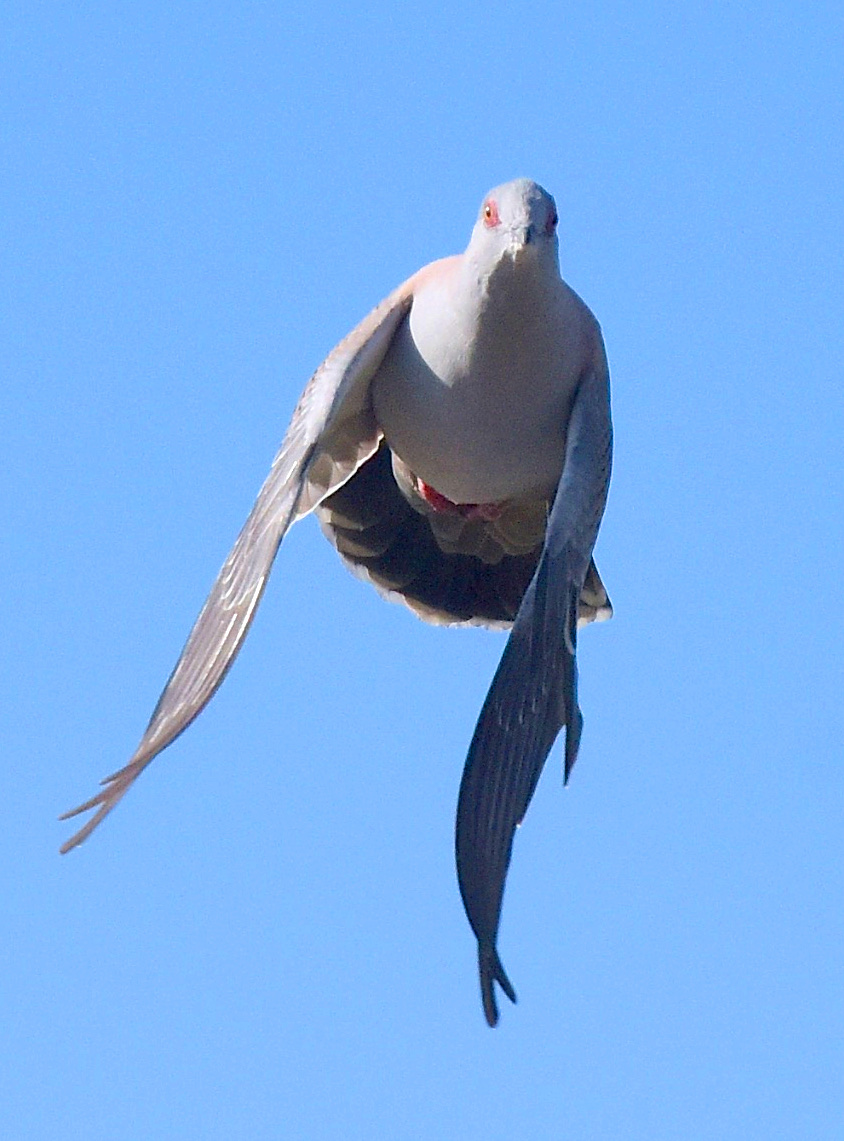Pigeon's wings have second function
 Many animals sound an alarm to alert others of impending danger, but it appears that crested pigeons do this in a surprisingly non-vocal way.
Many animals sound an alarm to alert others of impending danger, but it appears that crested pigeons do this in a surprisingly non-vocal way.
New research has found that one of the pigeons’ main flight feathers produces a high-pitched sound as the birds fly away. As they flap faster to escape a predator, that alarm signal automatically increases in tempo.
The study crucially showed other crested pigeons flee when they hear that sound, confirming that the sound is a bona fide signal, not just a side effect of flight.
Charles Darwin proposed the idea of non-vocal ‘instruments’ in birds about 150 years ago, but it has been a difficult idea to test.
Scientists had long known that crested pigeons make loud sounds when they fly. For that reason, they are sometimes called ‘whistle-winged pigeons’.
To confirm that the whistling feathers were indeed an alarm signal, the researchers from ANU shot high-speed video and conducted feather-removal experiments.
This showed that the birds' unusually narrow eighth primary wing feather produces a distinct note with each downstroke. The sound also changes as birds flap faster, such that those fleeing danger produce wing sounds with a higher tempo.
The experiments showed that the birds' wings produce alternating high and low notes in flight, with the eighth primary wing feather responsible for the high notes, while the low notes come from the ninth primary feather.
It is a very reliable method, the researchers say, because pigeons flap faster to escape predators, and this fast flapping automatically produces the high-tempo alarm signal.







 Print
Print